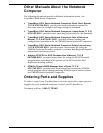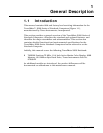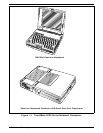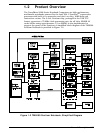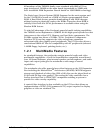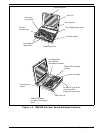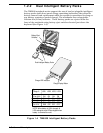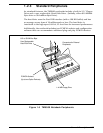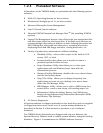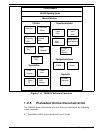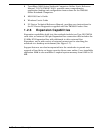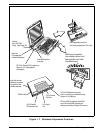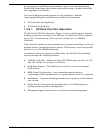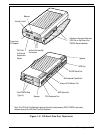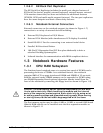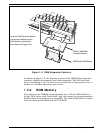
1.2.4 Preloaded Software
All members of the TM5000 family are preloaded with the following system
software:
• DOS v6.2 Operating System (or later version)
• Windows for Workgroups v3.11 (or later version)
• Advanced BatteryPro Power Management
• Jazz 16 Sound Control software
• Phoenix PCMCIA PhoenixCard Manager Plus
tm
(for installing PCMCIA
options)
• Laptop File Management System- this utility helps you manipulate files
and directories stored on your hard drive. It includes such features as
copying multiple directories to diskette or disk, deleting directories and
files, finding files using wild card characters, renaming directories,
displaying hard disk and floppy statistics, sorting directories, etc.
• Variety of productivity enhancement utilities including:
• WinMode Utility - selects video output to the built-in LCD
screen, CRT, or both
• Password utility that allows you to install or remove a
password system for files security
• Super Shutdown Utility that allows you to close open
applications and exit Windows faster than with the
conventional process.
• Alarms off utility (Walarms)- disables the cover closed alarm
and the low-battery alarm
• Drop N’Go Utility- allows you to display frequently run
applications as icons on your desktop or as menu items
under the File Manager utility.
• MIDI Mapper Utility- allows you to select a MIDI setup for a
sound device, create a new setup, edit existing maps, etc.
• Information Utilities including: Battery Level (Wbattery),
Battery Saving Software Help information (BatteryPro APM),
and Battery Tips (Battips).
• PC-Doctor Diagnostics
All system software is shipped preloaded on the hard drive and not supplied
in floppy form (user must create a set of system backup diskettes as
described in Section 3 of this manual or purchase a set of software
diskettes).
The TM5000 Series Notebooks are shipped with only one diskette: the
System Recovery Diskette used to rebuilt system software using the backup
diskettes. Figure 1-6 summarizes the TM5000 software features.
1-8 General Description



